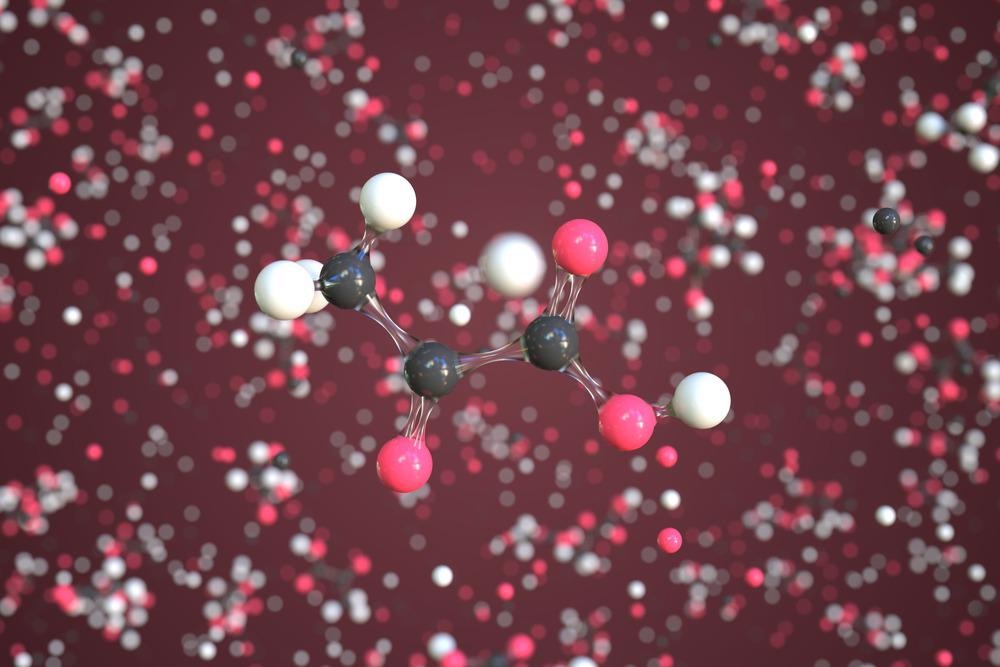In a study published in the journal Materials Letters, a biosensor centered on platinum nanoparticles (PtNPs) tuned two-dimensional MXene was created for precise pyruvate measurement in human blood.

Study: Platinum nanoparticles modified MXene for highly sensitive detection of pyruvate. Image Credit: Irina Anosova/Shutterstock.com
What is Pyruvate?
Pyruvate, the end product of glycolysis, is abundant in the human body. The glycolysis mechanism provides energy to the majority of the body's tissues. As a consequence, high pyruvate concentrations constitute a substantial risk factor for a variety of disorders.
The brain, for instance, is engaged in several metabolic activities, the primary source of energy being the digestion of glucose and pyruvate. As a result, if the metabolism is disrupted, it may cause substantial harm to the neurological system and contribute to a variety of disorders. Greater doses of pyruvate in cerebral fluid, for example, are thought to be one of the characteristics of Alzheimer's disease,
Issues with pyruvate metabolism have been related to medical disorders like chronic obstructive pulmonary disease (COPD) and diabetes. Thus, pyruvate assessment has serious therapeutic clinical consequences and may give useful insights for a science investigation. Pyruvate screening has been extensively researched in recent times.
Techniques to Detect Pyruvate
Pyruvate is routinely detected using chromogenic, spectrometry, fluorometric, and chromatography methods. Nevertheless, these methods have significant downsides, including being time-consuming and needing complicated instrumentation. As a consequence, more efficient methods of measuring pyruvate are necessary, and electrochemical sensors play an important part in this respect.
Most known catalytic pyruvate sensors are centered on the interaction of pyruvate oxidase (POx) with pyruvate to create hydrogen peroxide, and pyruvate is monitored passively by sensing hydrogen peroxide produced by the catalyzed activity, as per the formulas.
Electrochemical sensors provide various benefits for hydrogen peroxide sensing, including good sensitivity, rapid reaction rate, cheap cost, and low resistance. These sensors may also be miniaturized to provide transportable tools for pyruvate point-of-care diagnostics (POCT).
Owing to their unusual enzymatic, electrostatic, magnetic, and refractive capabilities, metal nanoparticles have been widely examined in the literature. Due to its catalytic effect on hydrogen peroxide oxidation and O2 reductions, platinum is presently the most favored substrate metal for biocatalytic processes.
Platinum nanoparticles, for example, are commonly used as enzyme substitutes to accelerate the creation of hydrogen peroxide.
Recently, some scientists created a novel two-dimensional material Ti3C2Tx -MXene, for the first time. MXene is a transition metal carbide having a layered structure, exceptional electrical properties, a high specific surface area, and exceptional wettability.
Key Objectives of the Study
MXene was created in this work by dissolving titanium aluminium carbide powder with lithium fluoride and hydrochloric acid and then modifying it with platinum nanoparticles to generate a two-dimensional composite material. Pyruvate enzyme was then adsorbed on a surface of the electrode coated with MXene- platinum nanoparticles. On the surface of the electrode, pyruvate oxidase will oxidize pyruvate to produce hydrogen peroxide.
Platinum nanoparticles and MXene were combined and self-assembled to generate an aqueous suspension of MXene and platinum nanoparticles. To create the sensor, mXene- platinum nanoparticles liquid mixture was applied to a cleaned electrode surface and dried at room temperature. When not being used, the final sensor was kept at 4 °C.
Performance Analysis of Sensor
To test the sensor's capability for pyruvate identification, different amounts of pyruvate were evaluated by the sensor. The potential effects were shown to rise as the pyruvate content increased. In the spectrum of 10-1000 M, satisfactory linear correlations were found.
The sensor was also quite repeatable, with a relative standard deviation (RSD) of 5%. When compared to other pyruvate identification techniques mentioned in the literature, this pyruvate sensor performed relatively well. One of the most significant aspects of the sensor is specificity; so, to investigate the sensor's specificity, numerous compounds were investigated that could coexist with pyruvate.
The experimental findings showed that the sensor's reactions to intervening chemicals such as sugar, uric acid (UA), were fairly small relative to pyruvate, confirming the sensor's selectivity. The pyruvate quantities in blood specimens evaluated by the biosensors were observed to be substantially comparable to those obtained by the assay method, demonstrating the sensor's possible medical applicability.
Important Outcomes of the Study
An electrochemical detection method was described based on pyruvate oxidase and MXene nanoparticles for the effective and sensitive detection of pyruvate.
MXene's large specific surface area and strong electrical conductance boosted the concentration of platinum nanoparticles and enabled the accurate detection of hydrogen peroxide produced by pyruvate oxidase decomposition. The research findings demonstrated that the sensors have great specificity and sensitivity for pyruvate identification.
Reference
Wen, Q., & Yang, M. (2022). Platinum nanoparticles modified MXene for highly sensitive detection of pyruvate. Materials Letters. Available at: https://linkinghub.elsevier.com/retrieve/pii/S0167577X22008497
Disclaimer: The views expressed here are those of the author expressed in their private capacity and do not necessarily represent the views of AZoM.com Limited T/A AZoNetwork the owner and operator of this website. This disclaimer forms part of the Terms and conditions of use of this website.